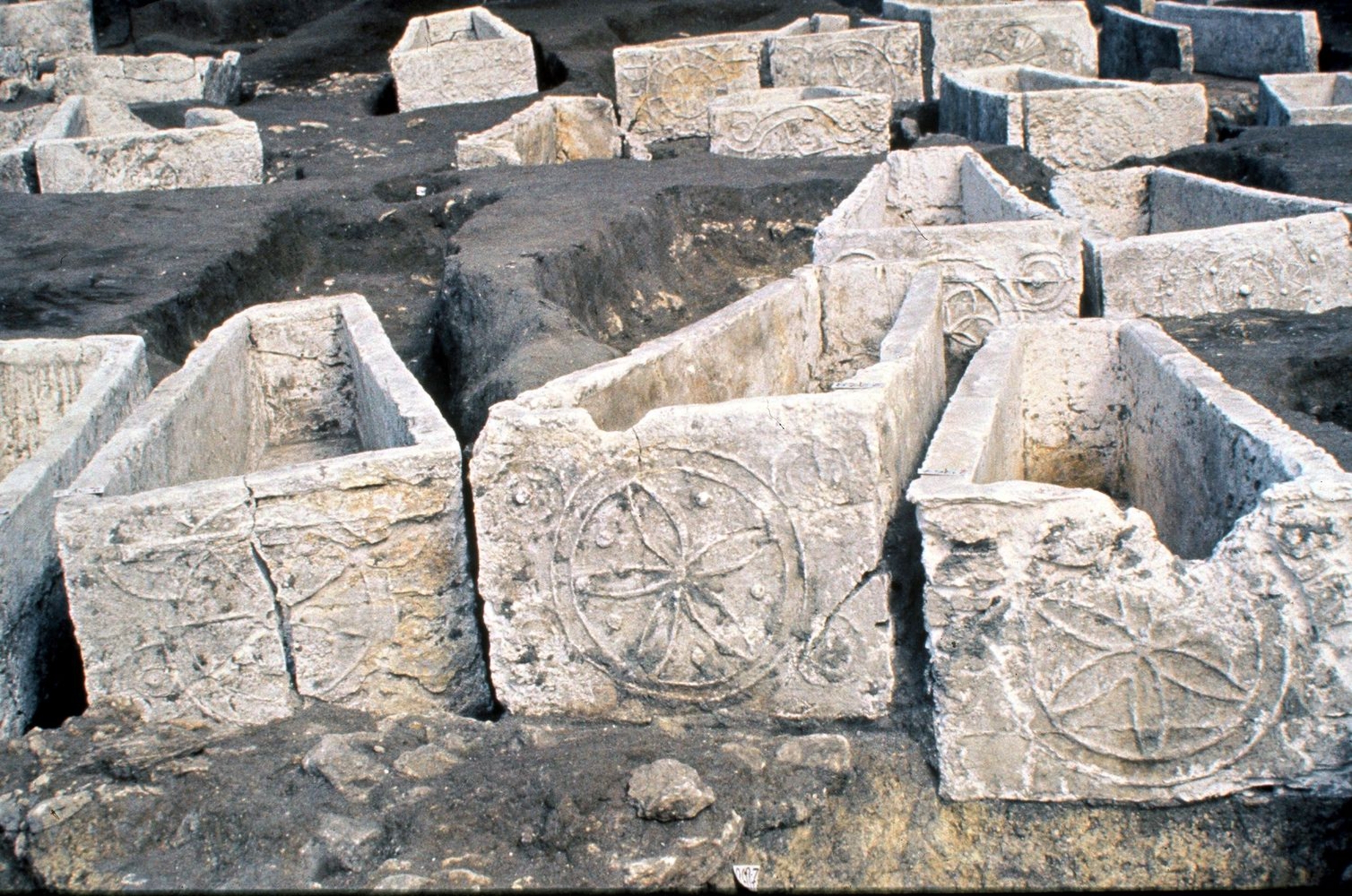- Home
- The town and the abbey
- The site from its origins
- Early history
- Long-distance trade
Map of long-distance trade routes. © UASD / J. Prim d'après Y. Gretener, P. Périn, S. Lebecq
Long-distance trade, which had been practiced by the Romans, continued during the early Merovingian period. Yellow amber was gathered on the shores of the North and Baltic Seas, on the west coast of Jutland and in Poland. Silk produced in Persia and China was worked in Constantinople. Wartime pillaging provided metals, precious stones and jewelry, which could be melted down and used as raw materials by craftspeople, or serve as sources of inspiration and as models.
Garnets from the mines of India and Sri Lanka were the most prized trade item during this period. However, starting in the seventh century CE, the expansion of the Islamic world shifted the trade routes. This gradually restricted the flow of Indian and Sri Lankan garnets to the West, forcing gold- and silversmiths to use European garnets from Bohemia.

